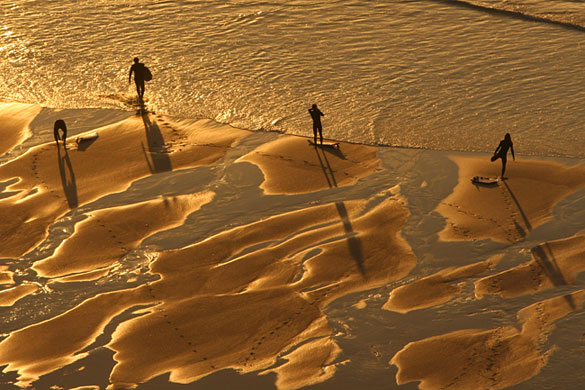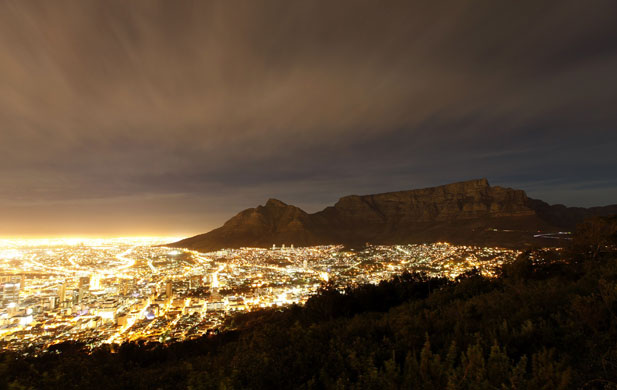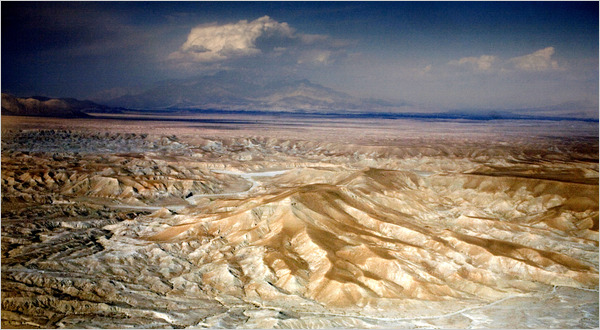It’s winter in the Northern Hemisphere and another snowstorm is descending across the Great Lakes. Traffic will snarl, walking will become a chore, and those staying home will come to feel like they are under house arrest. It seems inevitable, yet almost cruel, to then dream of summer’s golden reverie.

The surfers are almost incidental–tiny figurines or animate shadows whose puny shapes are there only to remind us how much the lavish, liquid sunlight dwarfs human scale. One has to labor to realize that the photograph shows only light, not pools of molten gold. And yet, even as that gold pools on a plane of sand and sea that also seems forged of the sun’s metal, there is a dark undertone. The day is long, and we know that this moment of sheer natural extravagance cannot last. A moment out of time is still tinged with mortality.

Here the golden light is even more pronounced, and yet the drama of light and darkness is sharper still. The brilliant horizon, as if the sea were another sun, flows like lava into the city of Cape Town, but both sky and land are already under another dispensation.

But the light always returns. Indeed, it ennobles all that it touches. Here an arid land, fractured by mountains and riven by war, appears like Shangri La. The golden mountains of Afghanistan, one might imagine, looking like pure gold, set in the middle distance of God’s eye, surely a blessed place.
And surely not a blessed place, if you think of the suffering there, with more to come. And so gold can seem to be no more than a trick of light, just as it also is an obviously artificial commodity, a fictional standard, and the stuff only of distraction and fantasy. The eye is easily mislead, one might say, and so both photographic art and serious thought should stick to reality’s gray scale.
But these images reveal another truth, one that could have genuinely radical implications. The golden light is but one aspect of the sun’s unending flow across the earth, and with that, of humanity’s ever present wealth. No one–ever–accomplishes anything without this free gift of energy that could never be created otherwise. There is a metaphor here as well (another extravagance), for sunlight not only gives of itself but represents other forms of wealth. The lesson of these images is not that warmth or beauty or any human good is necessarily apportioned to certain times or places, but that the good life is constantly available for those who can learn to see.
As I’ve said before, the deeper challenge now facing politics, and so art, is not to manage scarcity but to realize the abundance already available in nature and culture. Abundance that often is not seen up close and that might be waiting where least expected, as if far out at sea or on distant mountains.
Photographs by Sarah Lay/Guardian, Mike Hutchingst/Reuters, Moises Saman/New York Times.
Commercial: last month at
http://jonathan-morse.blogspot.com/2009/12/temptations-of-allegory.html
I blogged a little about the almost unavoidable temptation to read natural forms allegorically, as you do here. (Yellow, a color, approximates gold, a metal one of whose properties is the color yellow; gold approximates money by allegorical synecdoche; money approximates “humanity’s ever present wealth”).
Cybercorrection of my response: my name is Morse, not Mor.